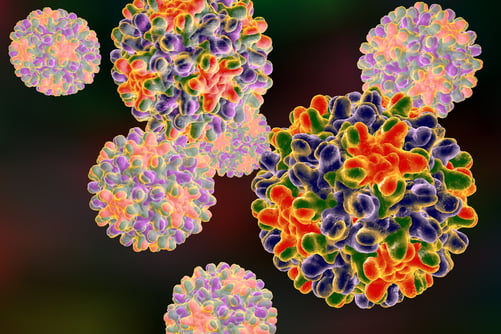How can humanized liver models provide accurate efficacy measurements at each stage of the viral lifecycle?
Hepatitis B is a serious global health threat. Around 1.5 million hepatitis B virus (HBV) infections were identified in 2019 alone and around 296 million people are thought to be living with the chronic disease.¹ Researchers are now targeting previously unexplored areas of the viral lifecycle to get closer to developing a complete cure.
To reach the complete cure goal, therapeutics must achieve both antigen seroclearance and silencing or eradication of viral DNA, effectively demonstrating disruption of the viral lifecycle. For this reason, preclinical models must enable the measurement of the entire viral lifecycle and provide efficacy results that are fully translatable to the human environment.
The PXB-mouse®, with its humanized liver, provides accurate measurement of all key infection markers in an optimal testing environment that is fully translatable to human outcomes.
Targeting every stage of the HBV lifecycle
Current, approved therapeutics have focused on alleviating symptoms and have made hepatitis B a treatable disease, but they rely on long-term usage since relapse often occurs. Even with this treatment, antigen seroclearance is very rare, and antiviral resistance is common. New research is focused on achieving antigen seroclearance, as well as targeting the eradication or silencing of serum HBV DNA and covalently closed circular DNA (cccDNA). Success in both areas will result in a complete cure for the disease.
As antiviral candidates target new areas of the viral lifecycle, preclinical models need to keep pace to detect efficacy at every stage. However, pseudo-infection and HBV-like models have provided limited benefits when it comes to assessing the full viral lifecycle, since HBV only infects humans and chimpanzees naturally. Although chimpanzee models are somewhat effective as preclinical models, they are no longer permitted.
Pre-clinical efficacy translation to positive human outcomes
As well as measuring the whole of the viral lifecycle, an effective preclinical model must translate accurately to the human environment to demonstrate likely efficacy at clinical trial stage. However, conventional animal models, commonly used in preclinical stages often provide misleading metabolism, pharmacokinetics, efficacy and hepatoxicity information.
This inaccuracy can lead to poor translation of pre-clinical models to in-human trials and result in lost time and money, as seemingly promising drug candidates fail to reach clinical endpoints.
PXB-mouse®: Complete lifecycle measurement with human-like outcomes
The PXB-mouse® model has a highly humanized liver that is highly populated with human hepatocytes. PXB-mice are reliably infected with HBV and show infection markers across the viral lifecycle, including serum HBV DNA, hepatitis B surface antigen (HBsAg) and hepatitis B e-antigen (HBeAg). It is also one of the few in vivo models where cccDNA is detected and, therefore, in which the full lifecycle of HBV can be studied.
By accurately detecting and measuring all key viral lifecycle markers, researchers can obtain detailed insight into the mode of action of the analyzed therapeutic.
The PXB-mouse® model enables testing across four major HBV genotypes (A, B, C, and D), allowing for the testing of both broad and targeted therapies. High translational potential has already been demonstrated in a variety of hepatitis B-targeted prophylactics and therapeutics, including entry inhibitors, inhibitors of HBsAg release, therapeutics targeting cccDNA and x protein (HBx), nucleos(t)ide analogs, capsid inhibitors and RNA interference and destabilization therapeutics.
Many of these novel drug candidates have already reached clinical stages, paving the way for a new wave of therapeutics that tackle new aspects of the viral lifecycle and bring us closer to a complete cure for this life-altering disease.

